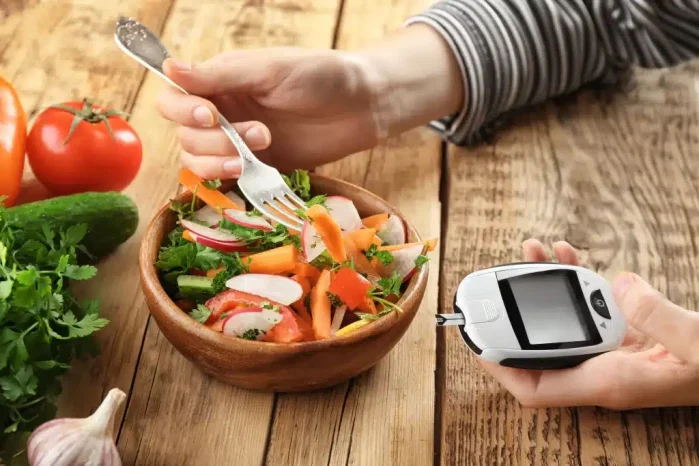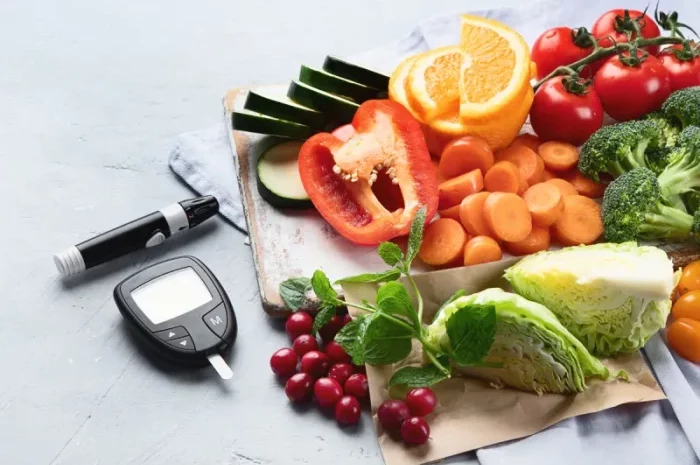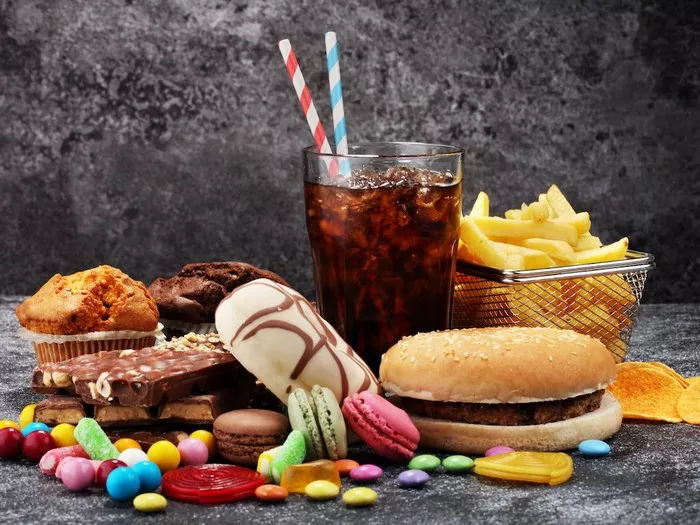Diabetes, a chronic condition characterized by high levels of glucose in the blood, often coexists with elevated cholesterol levels. This combination poses significant risks for cardiovascular diseases and other health complications. As a diabetes specialist, understanding the intricate relationship between diet, cholesterol, and blood sugar levels is crucial. This guide delves into the foods that can help manage and lower both cholesterol and blood sugar levels, offering practical dietary advice for diabetics.
Understanding Cholesterol and Blood Sugar
Before diving into dietary recommendations, it is essential to understand the basics of cholesterol and blood sugar.
Cholesterol
Cholesterol is a fatty substance found in every cell of the body, playing a vital role in the production of hormones, vitamin D, and substances that help digest food. There are two main types of cholesterol:
Low-Density Lipoprotein (LDL): Often referred to as “bad” cholesterol, high levels of LDL can lead to plaque buildup in arteries, increasing the risk of heart disease and stroke.
High-Density Lipoprotein (HDL): Known as “good” cholesterol, HDL helps remove LDL cholesterol from the bloodstream.
Blood Sugar
Blood sugar, or glucose, is the primary energy source for the body’s cells. The pancreas produces insulin, a hormone that helps cells absorb glucose from the blood. In diabetes, the body either does not produce enough insulin or cannot use it effectively, leading to high blood sugar levels.
Foods to Lower Cholesterol and Blood Sugar
Diet plays a pivotal role in managing diabetes and cholesterol levels. Here are specific foods and nutrients that can help achieve this balance:
1. Fiber-Rich Foods
Fiber, particularly soluble fiber, is beneficial for both blood sugar and cholesterol management. Soluble fiber dissolves in water to form a gel-like substance that helps lower cholesterol levels by binding with cholesterol particles in the digestive system and removing them from the body. It also slows the absorption of sugar, helping to control blood sugar levels.
Sources of Soluble Fiber:
Oats and Barley: Rich in beta-glucan, a type of soluble fiber that has been shown to lower LDL cholesterol.
Legumes: Beans, lentils, and peas are excellent sources of soluble fiber.
Fruits: Apples, pears, oranges, and berries contain high amounts of soluble fiber.
Vegetables: Carrots, Brussels sprouts, and sweet potatoes are good sources.
2. Healthy Fats
Not all fats are created equal. Healthy fats, such as monounsaturated and polyunsaturated fats, can help reduce LDL cholesterol and provide essential fatty acids that the body needs.
Sources of Healthy Fats:
Avocado: Packed with monounsaturated fats that can help lower LDL cholesterol.
Nuts and Seeds: Almonds, walnuts, chia seeds, and flaxseeds are rich in healthy fats and fiber.
Olive Oil: A staple of the Mediterranean diet, olive oil is high in monounsaturated fats.
Fatty Fish: Salmon, mackerel, sardines, and trout are high in omega-3 fatty acids, which can help lower triglycerides and improve HDL cholesterol levels.
3. Whole Grains
Whole grains retain all parts of the grain kernel, providing more nutrients and fiber compared to refined grains. Consuming whole grains can help regulate blood sugar levels and improve cholesterol profiles.
Examples of Whole Grains:
- Brown Rice
- Quinoa
- Whole Wheat
- Bulgar
- Farro
4. Plant Sterols and Stanols
Plant sterols and stanols are compounds found in plants that can help block the absorption of cholesterol in the intestines, thereby lowering LDL cholesterol levels.
Sources of Plant Sterols and Stanols:
Fortified Foods: Certain margarines, orange juices, and yogurts are fortified with sterols and stanols.
Nuts and Seeds: These naturally contain small amounts of plant sterols and stanols.
5. Low-Glycemic Index Foods
The Glycemic Index (GI) measures how quickly a food raises blood sugar levels. Low-GI foods are digested and absorbed more slowly, leading to a gradual rise in blood sugar and insulin levels.
Examples of Low-GI Foods:
Non-Starchy Vegetables: Leafy greens, tomatoes, cucumbers, and peppers.
Legumes: Beans, lentils, and chickpeas.
Whole Grains: Barley, bulgur, and oats.
Fruits: Berries, cherries, and apples.
6. Antioxidant-Rich Foods
Antioxidants help reduce oxidative stress and inflammation, both of which are linked to diabetes and cardiovascular diseases. Certain foods are particularly high in antioxidants and can help improve overall health.
Sources of Antioxidant-Rich Foods:
Berries: Blueberries, strawberries, and raspberries.
Dark Chocolate: Opt for chocolate with at least 70% cocoa content.
Green Tea: Contains catechins, a type of antioxidant.
Leafy Greens: Spinach, kale, and Swiss chard.
Meal Planning for Diabetics
Creating a balanced meal plan is crucial for managing diabetes and cholesterol. Here are some tips and sample meal ideas:
Breakfast
Oatmeal with Berries and Nuts: A bowl of oatmeal topped with fresh berries and a handful of almonds or walnuts.
Greek Yogurt with Chia Seeds and Fruit: Plain Greek yogurt mixed with chia seeds and slices of apple or pear.
Whole Grain Toast with Avocado and Eggs: Whole grain toast topped with mashed avocado and a poached or scrambled egg.
Lunch
Quinoa Salad with Chickpeas and Vegetables: A quinoa-based salad with chickpeas, cherry tomatoes, cucumbers, and a lemon-tahini dressing.
Lentil Soup: A hearty lentil soup made with carrots, celery, onions, and tomatoes.
Whole Grain Wrap with Turkey and Veggies: A whole grain wrap filled with lean turkey, spinach, bell peppers, and a drizzle of olive oil.
Dinner
Grilled Salmon with Brown Rice and Steamed Broccoli: Grilled salmon served with a side of brown rice and steamed broccoli.
Stuffed Bell Peppers: Bell peppers stuffed with a mixture of quinoa, black beans, corn, and spices, baked until tender.
Chicken Stir-Fry with Vegetables: A stir-fry made with lean chicken breast, broccoli, snap peas, carrots, and a low-sodium soy sauce.
Snacks
Apple Slices with Almond Butter: Fresh apple slices paired with a spoonful of almond butter.
Carrot Sticks with Hummus: Crunchy carrot sticks dipped in hummus.
Mixed Nuts and Seeds: A small handful of mixed nuts and seeds for a quick and healthy snack.
Lifestyle Changes to Support Dietary Efforts
In addition to a healthy diet, certain lifestyle changes can significantly impact cholesterol and blood sugar levels.
Regular Physical Activity
Engaging in regular physical activity helps improve insulin sensitivity, lower blood sugar levels, and reduce cholesterol. Aim for at least 150 minutes of moderate-intensity aerobic exercise per week, such as walking, swimming, or cycling. Incorporate strength training exercises at least two days a week.
Maintain a Healthy Weight
Achieving and maintaining a healthy weight is crucial for managing diabetes and cholesterol. Even a modest weight loss of 5-10% of your body weight can lead to significant improvements in blood sugar control and cholesterol levels.
Quit Smoking
Smoking is a significant risk factor for cardiovascular diseases and can worsen both diabetes and cholesterol levels. Quitting smoking can improve HDL cholesterol and overall heart health.
Limit Alcohol Consumption
Excessive alcohol intake can lead to high blood pressure, increased triglycerides, and weight gain. If you choose to drink, do so in moderation—up to one drink per day for women and up to two drinks per day for men.
Manage Stress
Chronic stress can negatively impact blood sugar levels and overall health. Practice stress-reducing techniques such as meditation, deep breathing exercises, yoga, or spending time in nature.
Monitoring and Regular Check-Ups
Regular monitoring of blood sugar levels and cholesterol is essential for managing diabetes and associated risks. Here are some key points to consider:
Blood Sugar Monitoring
Self-Monitoring: Use a blood glucose meter to check your blood sugar levels regularly. Keep a log of your readings to identify patterns and make necessary adjustments to your diet and lifestyle.
A1C Test: This test measures your average blood sugar levels over the past 2-3 months. Aim for an A1C level of less than 7%, or as advised by your healthcare provider.
Cholesterol Testing
Lipid Profile: Get a lipid profile test at least once a year to measure your total cholesterol, LDL, HDL, and triglycerides. Aim for LDL cholesterol levels below 100 mg/dL and HDL levels above 40 mg/dL for men and 50 mg/dL for women.
Triglycerides: Keep triglyceride levels below 150 mg/dL.
Regular Check-Ups
Schedule regular appointments with your healthcare provider to review your diabetes management plan, monitor your progress, and make any necessary adjustments. This includes visits to a dietitian, diabetes educator, or endocrinologist as needed.
The Role of Medications
While diet and lifestyle changes are the cornerstone of managing diabetes and cholesterol, medications may also be necessary for some individuals.
Diabetes Medications
Metformin: A common first-line medication that helps lower blood sugar levels and improve insulin sensitivity.
Sulfonylureas: Medications that stimulate the pancreas to produce more insulin.
DPP-4 Inhibitors: These help increase insulin production and decrease glucose production in the liver.
GLP-1 Receptor Agonists: Medications that increase insulin secretion and slow down digestion.
Cholesterol-Lowering Medications
Statins: These are the most commonly prescribed medications for lowering LDL cholesterol.
Bile Acid Sequestrants: Medications that help reduce cholesterol absorption in the intestines.
PCSK9 Inhibitors: Newer medications that can significantly lower LDL cholesterol levels.
Discuss with your healthcare provider the best medication options for your specific condition, and always follow the prescribed treatment plan.
See also: What’s the Optimal Diet for Prediabetes Management
Conclusion
Managing cholesterol and blood sugar levels is a multifaceted approach that involves a balanced diet, regular physical activity, lifestyle changes, and, when necessary, medications. For diabetics, maintaining optimal levels of both cholesterol and blood sugar is crucial for reducing the risk of cardiovascular diseases and other complications. By incorporating fiber-rich foods, healthy fats, whole grains, plant sterols, low-GI foods, and antioxidant-rich foods into your diet, you can take significant steps towards better health. Regular monitoring, check-ups, and a commitment to a healthy lifestyle are key components of effective diabetes management.
Remember, individual dietary needs and health conditions vary, so it is essential to work closely with your healthcare provider to create a personalized plan that works best for you. By taking proactive steps and making informed choices, you can successfully manage your diabetes and maintain healthy cholesterol levels for a better quality of life.
Related topics:
What’s the Diet for Prediabetics? A Comprehensive Guide



























